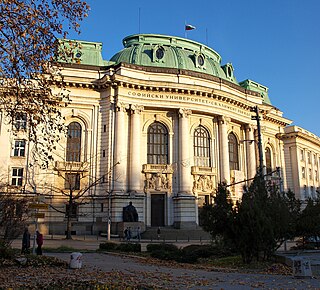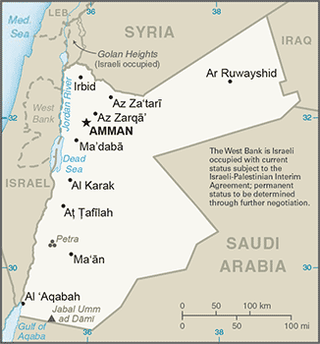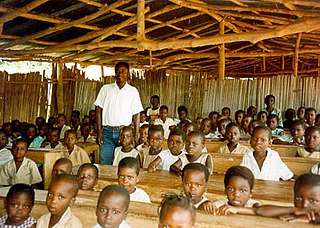The Senegalese education system is based on its French equivalent. The state is responsible for the creation of an educational system that enables every citizen access to education. Articles 21 and 22 of the Constitution adopted in January 2001 guarantee access to education for all children. However, due to limited resources and low demand for secular education in areas where Islamic education is more prevalent, the law is not fully enforced.
Education in Colombia includes nursery school, elementary school, high school, technical instruction and university education.

Education in Bolivia, as in many other areas of Bolivian life, has a divide between Bolivia's rural and urban areas. Rural illiteracy levels remain high, even as the rest of the country becomes increasingly literate. Bolivia devotes 23% of its annual budget to educational expenditures, a higher percentage than in most other South American countries, albeit from a smaller national budget. A comprehensive, education reform has made some significant changes. Initiated in 1994, the reform decentralized educational funding in order to meet diverse local needs, improved teacher training and curricula, formalized and expanded intercultural bilingual education and changed the school grade system. Resistance from teachers’ unions, however, has slowed implementation of some of the intended reforms.

Education in Nepal has been modeled on the Indian system, which is in turn the legacy of the old British Raj. The National Examinations Board (NEB) supervises all standardized tests. The Ministry of Education is responsible for managing educational activities in Nepal. The National Center for Educational Development (NCED) is Nepal's teacher-training body.

Education in Bulgaria is guided and overseen by Bulgarian Ministry of Education and Science. Compulsory education includes three years of pre-primary education, primary education, and secondary education. The schools start by age of seven and end the age of 18. Compulsory education at state schools is free of charge. The state and private higher education schools, colleges and universities charge fees, although they offer students scholarships.

Education in Costa Rica is divided in 3 cycles: pre-education, primary education, and secondary school, which leads to higher education. School year starts between the second and third week of February, stops at the last week of June, it continues again between the third and fourth week of July and finishes between the last week of November and the second week of December. Preschool and basic education are free to the public. Elementary and secondary school are both divided in two cycles. Since 1869, education is free and compulsory.

Education in Montenegro is regulated by the Ministry of Education and Science of Government of Montenegro.
Education in the State of Palestine refers to the educational system in the Gaza Strip and the West Bank, which is administered by the Palestinian Ministry of Education and Higher Education. Enrollment rates amongst Palestinians are relatively high by regional and global standards. According to a youth survey in 2003, 60% between the ages 10–24 indicated that education was their first priority. Youth literacy rate is 98.2%, while the national literacy rate is 91.1%. Enrollment ratios for higher education were 46.2% in 2007, among the highest in the world. In 2016 Hanan Al Hroub was awarded the Varkey Foundation Global Teacher Prize for her work in teaching children how to cope with violence.
Following independence from the Soviet Union, a major economic depression cut "public financing" for education in Kazakhstan, "which dropped from 6% of gross domestic product in 1991 to about 3% in 1994, before rising to 4% in 1999. Elementary- and secondary-school teachers remain badly underpaid; in 1993 more than 30,000 teachers left education, many of them to seek more lucrative employment.

The education system of the Hashemite Kingdom of Jordan includes basic, secondary, and higher education and has dramatically evolved since the establishment of the state in the early 1900s. The role played by a good education system has been significant in the development of Jordan from a predominantly agrarian to an industrialized nation over time.
Education in Belarus is free at all levels except for higher education. The government ministry that oversees the running of the school systems is the Ministry of Education of the Republic of Belarus. Each of the regions inside Belarus has oversight of the education system, and students may attend either a public (state) or a private school. The current structure of the educational system was established by decree in 1994. The education system is also based on The Education Code of the Republic of Belarus and other educational standards.

Education in Chad is challenging due to the nation's dispersed population and a certain degree of reluctance on the part of parents to send their children to school. Although attendance is compulsory, only 68% of boys continue their education past primary school, and over half of the population is illiterate. Higher education is provided at the University of N'Djamena.

Practically all children attend Quranic school for two or three years, starting around age five; there they learn the rudiments of the Islamic faith and some classical Arabic. When rural children attend these schools, they sometimes move away from home and help the teacher work his land.
During Alfredo Stroessner Mattiauda’s presidency (1954–89), education initiatives took a backseat to economic concerns and the task of controlling political adversaries, and teacher salaries fell to extremely low levels. The constitution of 1992 attempted to remedy the long neglect of education. Article 85 of the constitution mandates that 20% of the government budget be designated for educational expenditures. This measure, however, has proven to be impractical and has been largely ignored.

Western-style education was introduced to Bhutan during the reign of Ugyen Wangchuck (1907–26). Until the 1950s, the only formal education available to Bhutanese students, except for private schools in Ha and Bumthang, was through Buddhist monasteries. In the 1950s, several private secular schools were established without government support, and several others were established in major district towns with government backing. By the late 1950s, there were twenty-nine government and thirty private primary schools, but only about 2,500 children were enrolled. Secondary education was available only in India. Eventually, the private schools were taken under government supervision to raise the quality of education provided. Although some primary schools in remote areas had to be closed because of low attendance, the most significant modern developments in education came during the period of the First Development Plan (1961–66), when some 108 schools were operating and 15,000 students were enrolled.

Education in Ivory Coast continues to face many challenges. Among sub-Saharan African countries, Ivory Coast has one of the highest literacy rates. According to The World Factbook - Central Intelligence Agency as of facts. The literacy rate for adults remains low: in 2000, it was estimated that only 48.7% of the total population was literate. Many children between 6 and 10 years are not enrolled in school, mainly children of poor families. The majority of students in secondary education are male. At the end of secondary education, students can sit the Baccalauréat examination. The country has universities in Abidjan, Bouaké, and Yamoussoukro.
Education in Belize is governed by the Education Act.
Education in Georgia is free of charge and compulsory from the age of 6 until 17-18 years. In 1996, the gross primary enrollment rate was 88.2 percent, and the net primary enrollment rate was 87 percent; 48.8 percent are girls and 51.8 percent are boys. Constitution mandates that education is free. Related expenses that include textbooks and laptops are provided by the state free of charge; in 2001 there were 47,837 children not attending primary school.

Benin has abolished school fees and is carrying out the recommendations of its 2007 Educational Forum. In 2018, the net primary enrollment rate was 97 percent. Gross enrollment rate in secondary education has greatly increased in the last two decades, from 21.8 percent in 2000 to 59 percent in 2016, 67.1 percent in the case of males and 50.7 percent for females. Because of a rapid increase in the enrollment rate, the student/teacher ratio rose from 36:1 in 1990 to 53:1 in 1997 but has dropped again in the last years to 39:1 (2018). In 2018, the gross enrollment ratio in tertiary education was 12.5%.

Primary education in Guinea is compulsory for 6 years. In 1997, the gross primary enrolment rate was 54.4 percent and the net primary enrolment rate was 41.8 percent. Public education in Guinea is governed by three ministries: The Ministry for Pre-University Education and Literacy; The Ministry for Technical Education and Occupational Training; and the Ministry for Higher Education, Scientific Research and Innovation.












